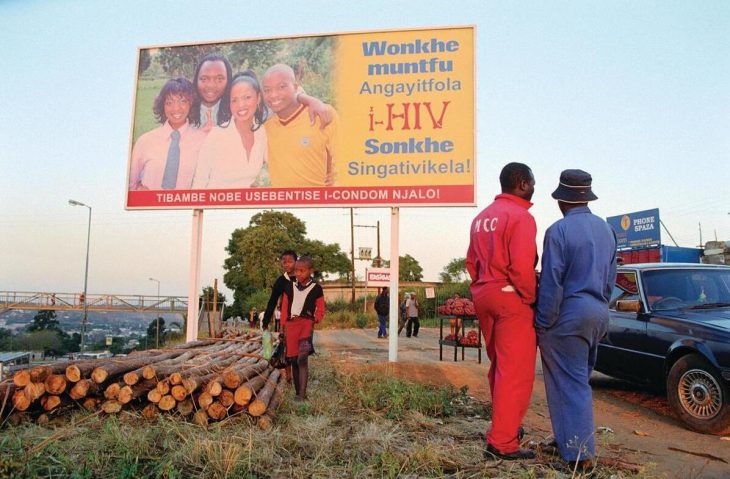eSwatini Population

ESwatini is one of the last monarchical kingdoms in the world. The king decided in 2018 that the country’s name should be changed from Swaziland to eSwatini. Large inequalities between poor and rich characterize society.
Key figures and facts
- Capital: Mbabane
- Ethnic groups: Africans 97%, Europeans 3%
- Language: English (official), siSwati (unofficial)
- Religion: Christians 90% (Zionists – a mixture of Christianity and natural religions – 40%, Catholics 20%, other 30% (including Anglicans, Methodists, Mormons, Jehovah’s Witnesses)), Muslims 2%, other 8% (including Baha’i, Buddhists, Hindus, Traditional Religions, Jews) (2015)
- Population: 1 391 385 (2018)
- Control Form: monarchy
- Area: 17 360 km2
- Currency: Swaziland lilangeni, South African border
- GNP per capita: 8 330 PPP $
- National Day: September 6th
Population of Swaziland
The population was estimated at 1.1 million in 2006, and annual population growth to 1.0% (1994–2004). High birth rates and declining mortality have resulted in high natural growth and a “young” population; 40% of the population is under 15 years of age. Life expectancy has declined sharply in recent years. According to the World Health Organization, life expectancy for women was 39 years in 2004 (up from 61 a decade earlier), and 36 years for men (up from 53 years earlier). UN calculations from 2005 estimate that 1/3 of the adult population living with HIV/AIDS.

84% of the population belongs to Swazi and 10% to Zulu. About 2% are South Africans and 1% Asians.
Nearly half of the population is concentrated in the fertile Middleveld, while the dry Lowveld has little settlement. 27% of the population lived in urban areas (2001). The capital Mbabane is the country’s largest city (73,000 residents, 2000).
Population of Swaziland by Year (Historical)
| Year | Population | Annual Growth Rate | Population Density | Global Rank |
| 2020 | 1,160,053 | 1.050% | 67.4514 | 159 |
| 2019 | 1,148,019 | 1.040% | 66.7517 | 159 |
| 2018 | 1,136,170 | 1.020% | 66.0628 | 159 |
| 2017 | 1,124,694 | 0.970% | 65.3956 | 159 |
| 2016 | 1,113,886 | 0.900% | 64.7673 | 159 |
| 2015 | 1,103,933 | 0.730% | 64.1886 | 159 |
| 2010 | 1,064,726 | 0.660% | 61.9091 | 158 |
| 2005 | 1,030,468 | 0.500% | 59.9174 | 154 |
| 2000 | 1,005,324 | 1.640% | 58.4555 | 154 |
| 1995 | 926,730 | 2.420% | 53.8861 | 154 |
| 1990 | 822,309 | 3.300% | 47.8151 | 154 |
| 1985 | 698,969 | 3.530% | 40.6442 | 157 |
| 1980 | 587,747 | 3.300% | 34.1778 | 158 |
| 1975 | 499,652 | 2.990% | 29.0560 | 159 |
| 1970 | 431,142 | 2.890% | 25.0728 | 159 |
| 1965 | 373,808 | 2.130% | 21.7395 | 159 |
| 1960 | 336,472 | 2.120% | 19.5688 | 157 |
| 1955 | 302,917 | 2.110% | 17.6179 | 159 |
| 1950 | 272,892 | 0.000% | 15.8723 | 159 |
Major Cities in Swaziland by Population
| Rank | City | Population |
| 1 | Manzini | 110,426 |
| 2 | Mbabane | 76,107 |
| 3 | Big Bend | 10,231 |
| 4 | Malkerns | 9,613 |
| 5 | Nhlangano | 8,905 |
| 6 | Mhlume | 8,541 |
| 7 | Hluti | 6,652 |
| 8 | Siteki | 6,041 |
| 9 | Piggs Peak | 5,639 |
| 10 | Lobamba | 4,446 |
Religion
About 52% of the population belongs to independent African churches, approximately 22% are Protestant Christians, approximately 8% are Catholic. Other local, traditional religions.
Language
The country has two official languages: English and Swazi (Siswati). Swazi is a bantu language that belongs to the Niger Congo languages. Smaller groups speak other bantu languages such as thonga (tsonga) and zulu.













































